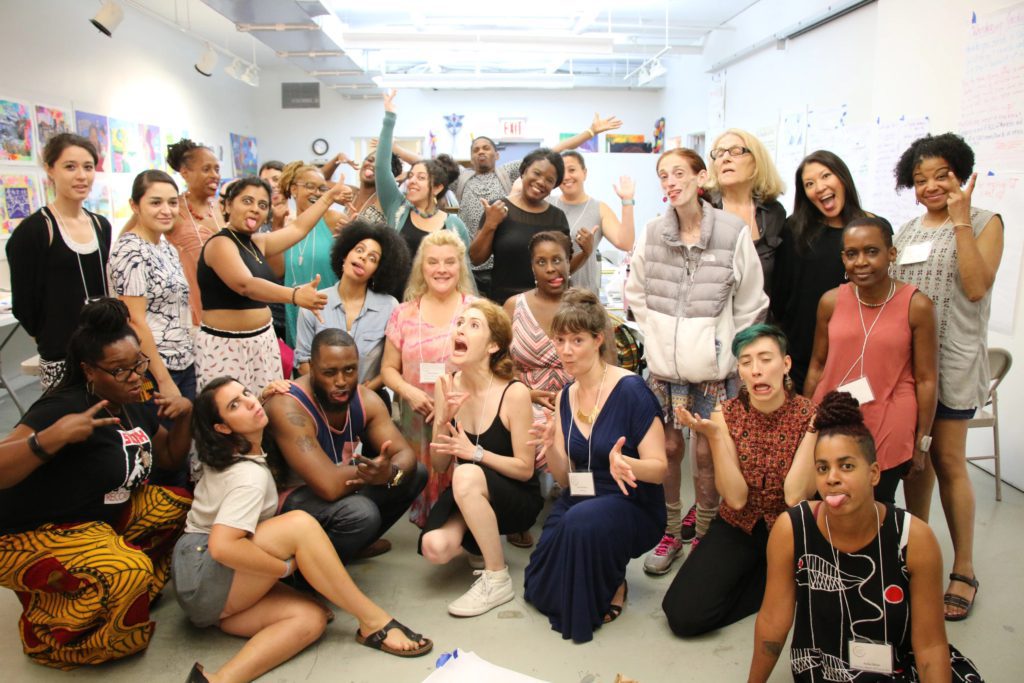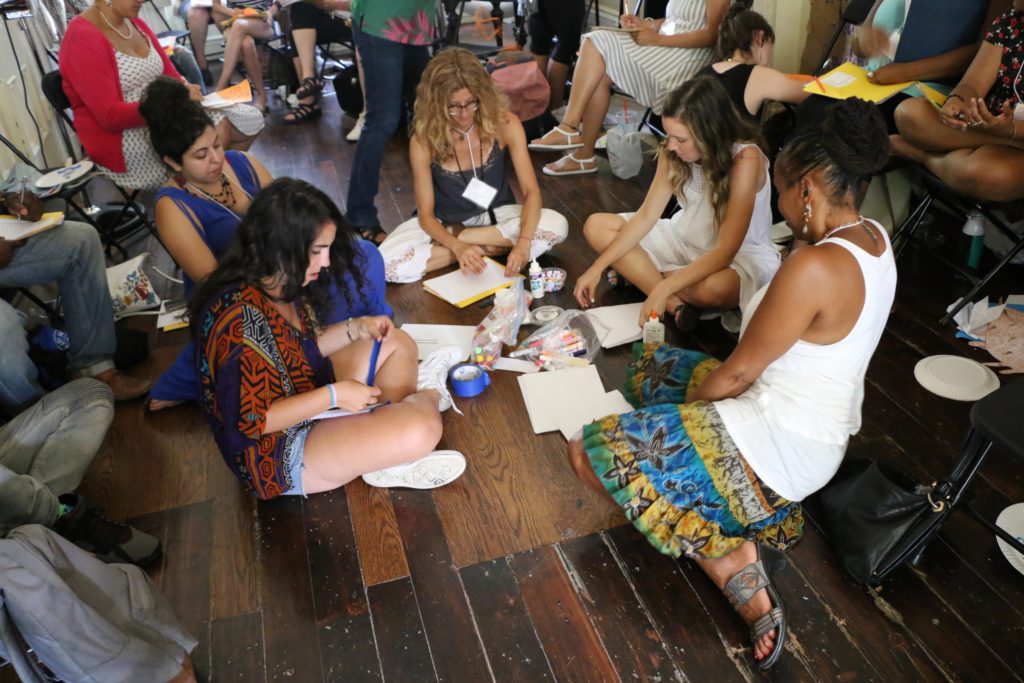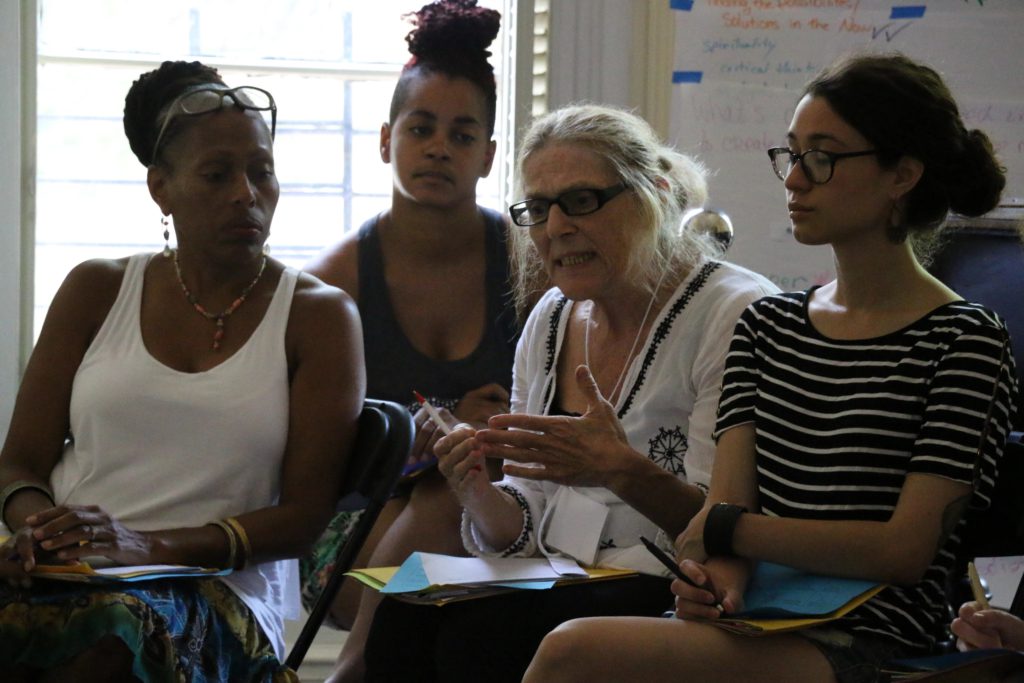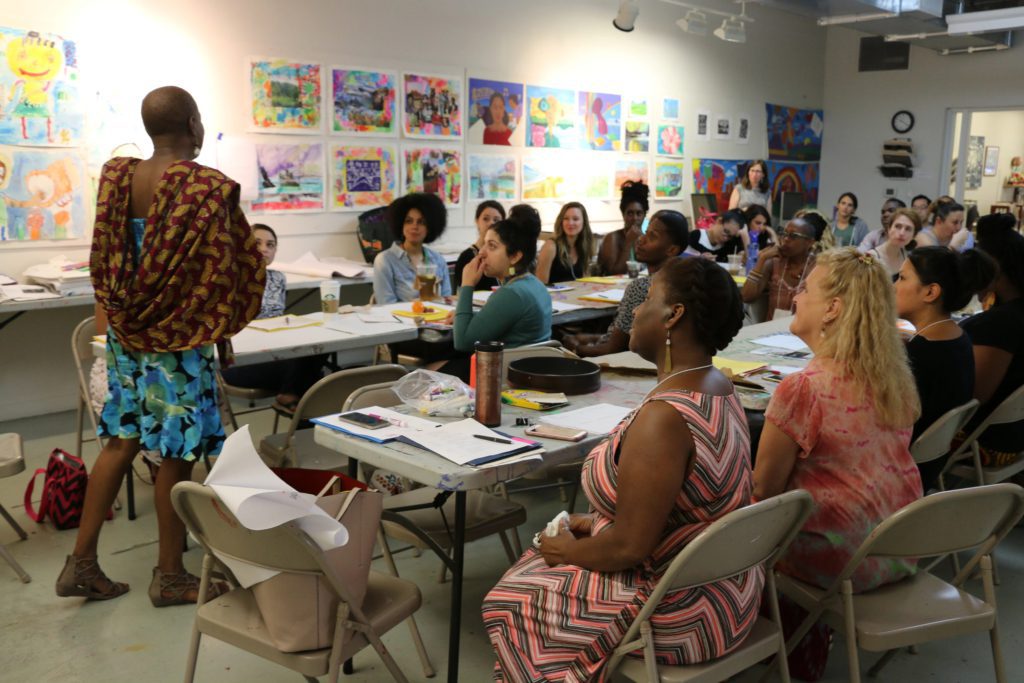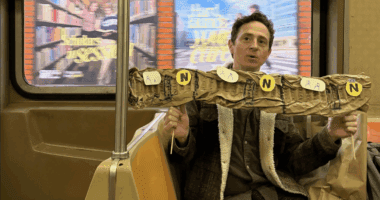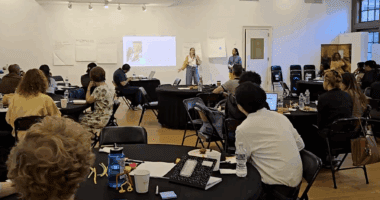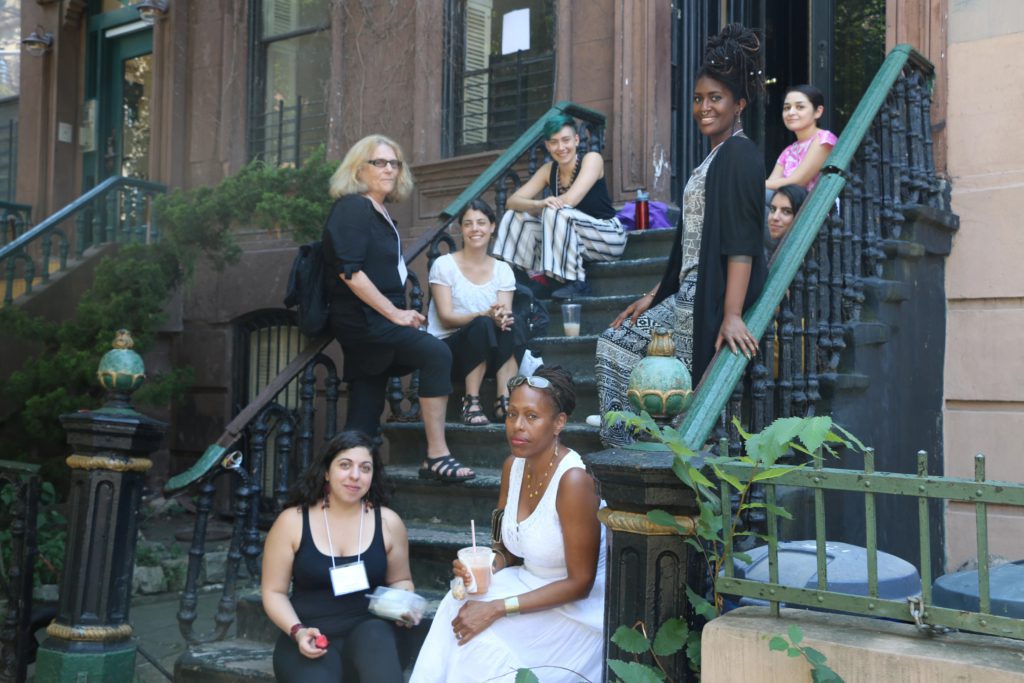
On July 19th, 2017, twenty-nine Teaching Artists came together to focus on teaching for social justice and enhancing their skills in the classroom at Community-Word Project’s (CWP) 7th annual Summer Institute. This year’s community was made up of writers, musicians, media & visual artists, dancers and theatre artists from all over the country, including New York, Tennessee, Arizona, and Texas. Facilitated by Program Director Patti Chilsen and Program Facilitator Karla Robinson, the training spanned an intense three days, building upon the social justice pedagogy that is the foundation for CWP’s Teaching Artist Project.
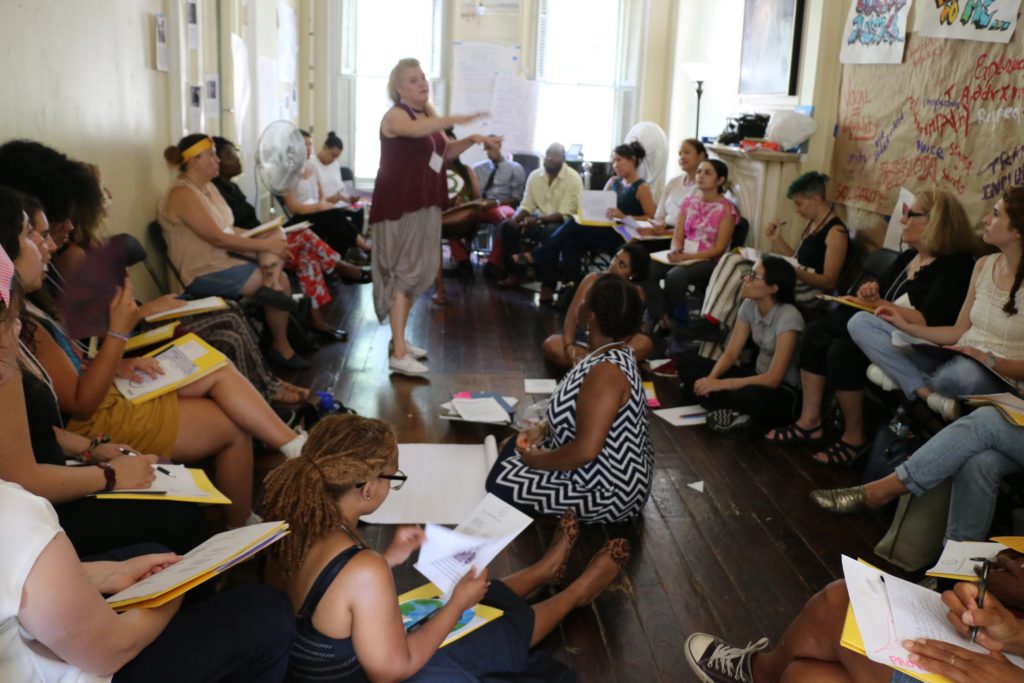
We were lucky to spend the institute in two beautiful locations: the Langston Hughes House and the LeRoy Neiman Arts Center. We spent the first two days in Langston Hughes’ home thanks to Renée Watson and the I, Too Arts Collective, and day three at the LeRoy Neiman Arts Center, where we were privileged to create with the beautiful works of Donovan Nelson surrounding.
What does it mean to teach for social justice?
That is exactly what these participants spent three days focusing on and defining. Using Bree Picower’s six elements of social justice, the participants explored a variety of teaching activities, techniques, lessons, and the intersection of art and activism, all while cultivating a deep understanding of what it means to teach for social justice.
Self-Love and Knowledge
From day one, the facilitators had the participants questioning and exploring their own artistry, navigating their own creative elements so that they can clearly translate them in the classroom. They did this, by first having each participant define the tools they needed in order to create and share art, and what they need in order to be fully present and a supportive community member during the three days together.
This foundation of self-exploration and love made it possible for this community to grow close and strong together in such a short amount of time. It paved the scene for this community to accomplish all of the other elements of social justice effectively and in the most impactful way.
Respect for Others
As a community, these artists got to know one another by discovering the reasons they each choose to teach for social justice. From the beginning, the conversation started with challenges that the participants face in teaching for social justice, what it means to them, what it feels like, and more. They spent time asking each other questions and getting to know everyone on both an artistic and activist level.
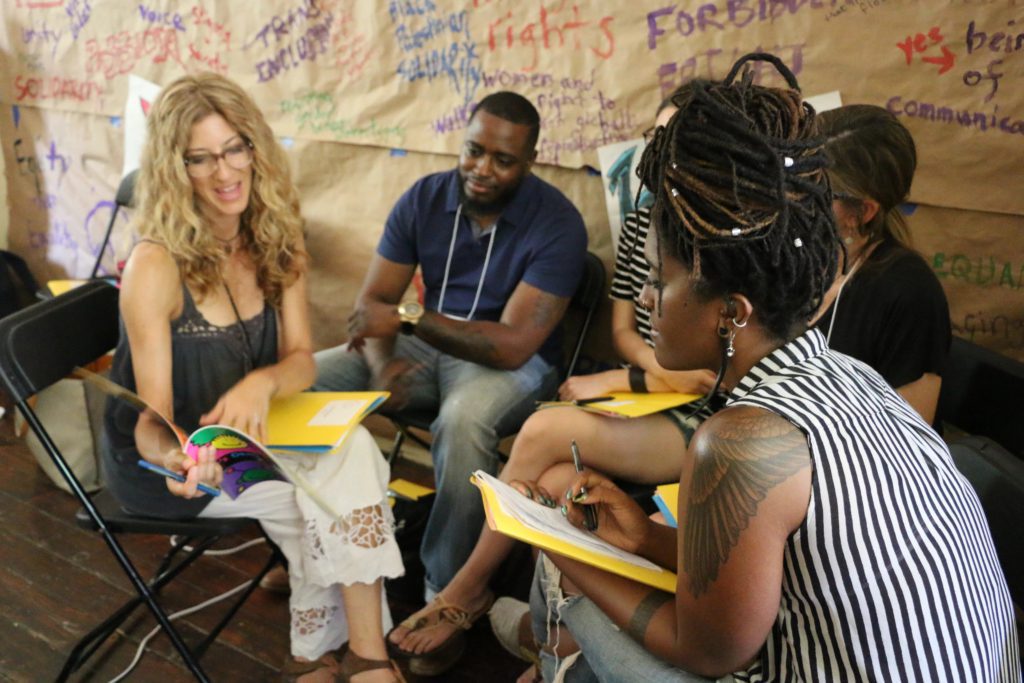
Each day’s agenda was layered with activities that target different learning types, assessment to have a better awareness of the environments we work with, and reflection and inquiry in order to have a deeper understanding of every creative lesson implemented.
By creating pedagogy that serves multiple populations and builds strong community, we show respect for those we teach and those we teach with.
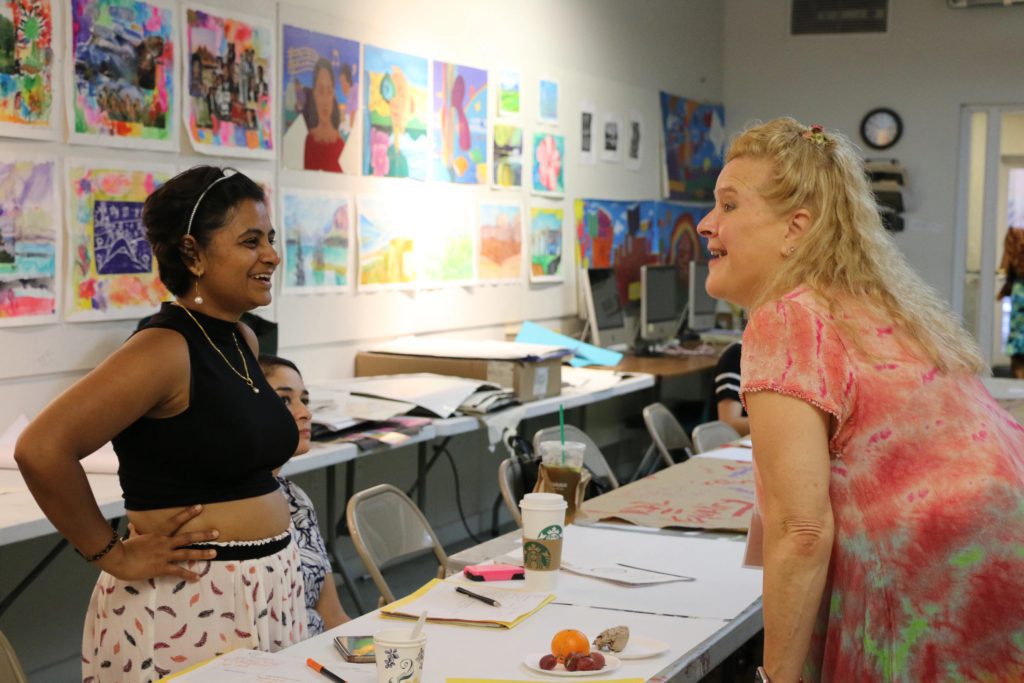
Social Movements & Social Change
A number of the activities during this year’s Summer Institute targeted different movements and calls for social change in fun and engaging ways.

The participants created political cartoons about situations of social injustice, like women’s rights, racism, and the environment.
“My favorite moment of the day was the risk I took to create a cartoon. Not being a visual artist does not allow for much confidence in that department. I felt you challenged something inside of me not only to express myself in a way that is not natural, but you made me think deeply about issues that I care about.” – Jennifer Neuman, Dancer
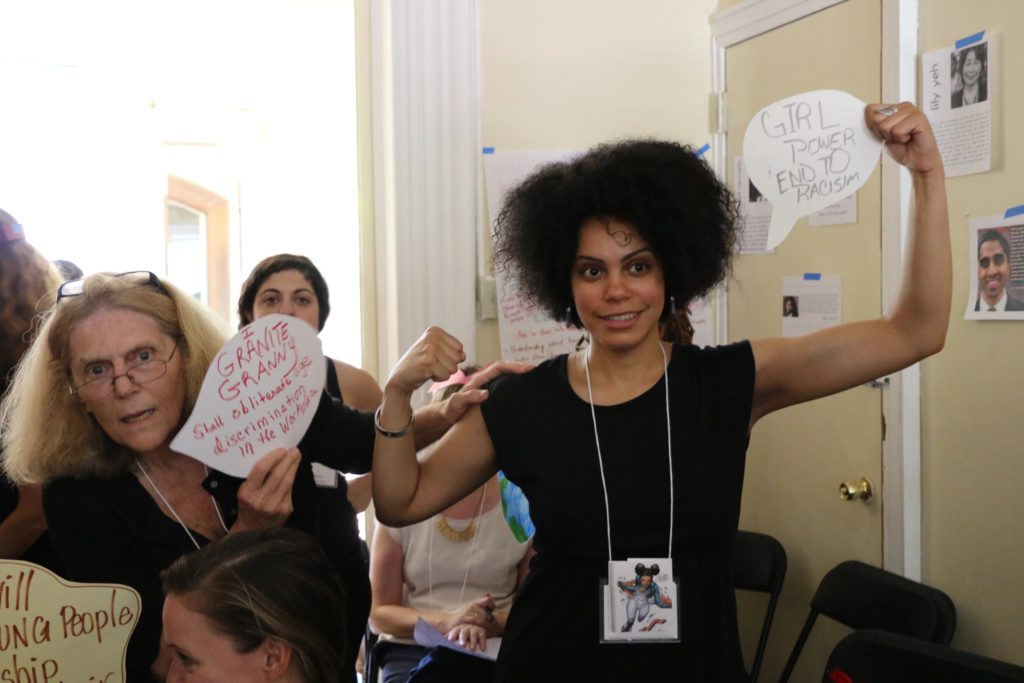
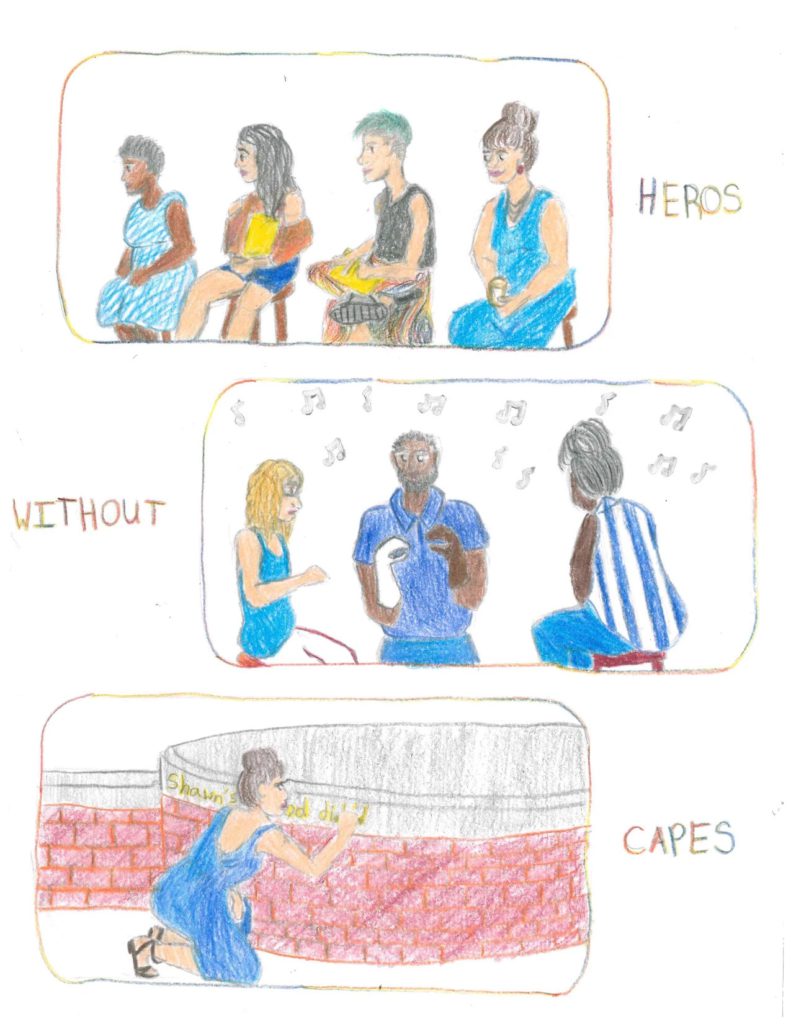
They explored privilege: who has it, what does it look like, who doesn’t have it, etc.
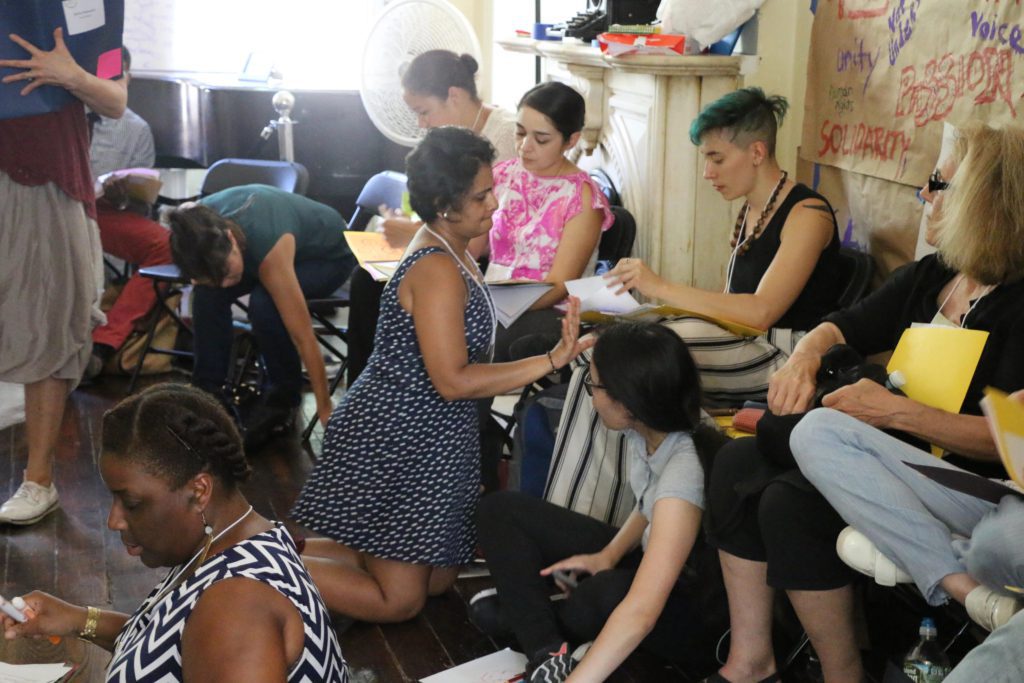
These activities can have students engaging directly in art-making (whether visual, movement, music, writing), while simultaneously discussing issues of social injustice around them in order to better understand the world in which they live.
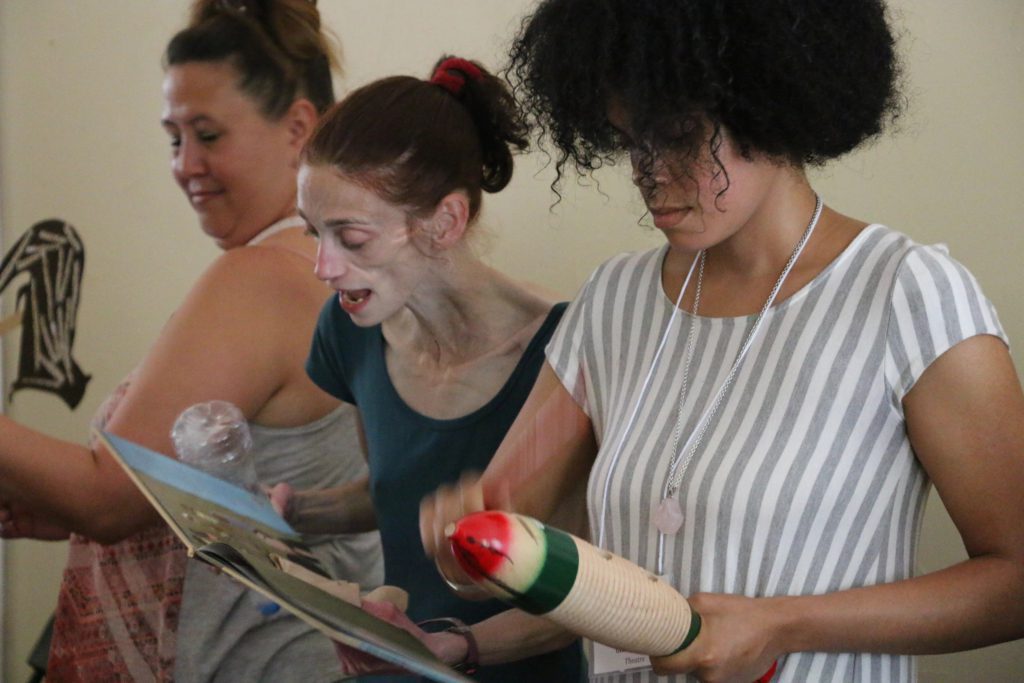
Issues of Social Injustice
Perhaps one of the most intense moments of the training came on day three. The day started at the LeRoy Neiman Arts Center in Harlem, where we were privileged to view the artwork of Donovan Nelson and listen to a brief history of his work currently on exhibition, the Igbo Landing Series, from the museum’s Executive Director, Marline Martin. Marline not only shared the story behind his work and Igbo Landing – the setting of the final scene of an 1803 resistance of enslaved Igbo people brought from West Africa on slave ships. Its moral value as a story of resistance towards slavery has symbolic importance in African American folklore and literary history – but also shared a traditional song of the Igbo people.
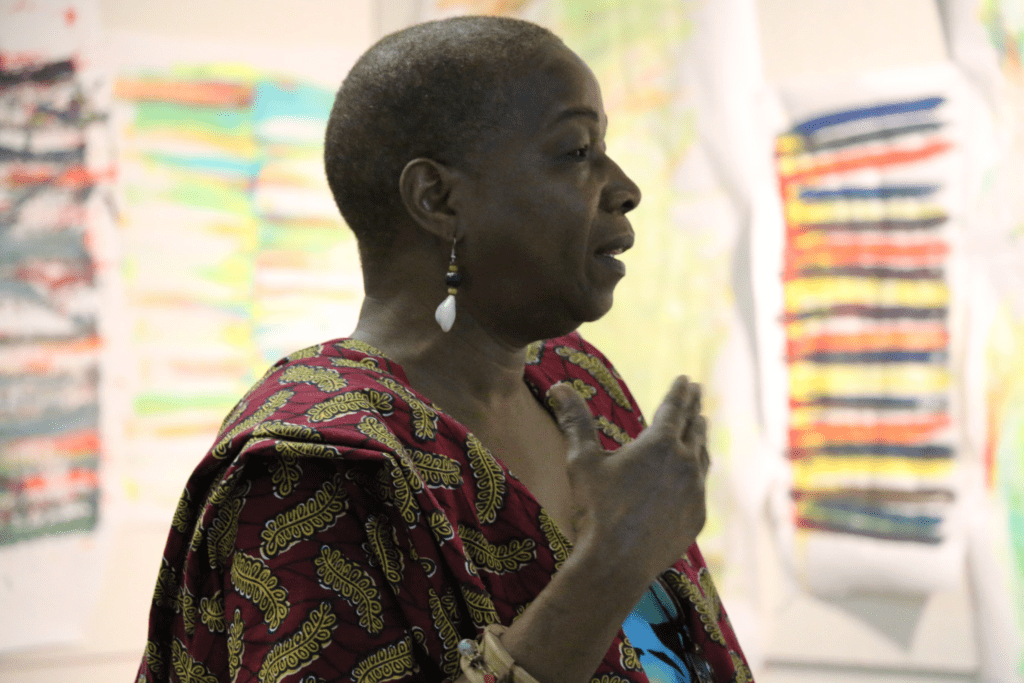
It was a beautiful and moving way to set the scene for the rest of the day and for the next activity, in which the participants responded to a poem called “Night, for Henry Dumas”by Aracelis Girmay (a TAP Graduate and former CWP Teaching Artist). After responding to this poem, Nelson’s artwork on display around the gallery, and racial statistics for those killed by police, the participants used the information they gathered to create their own poetry.
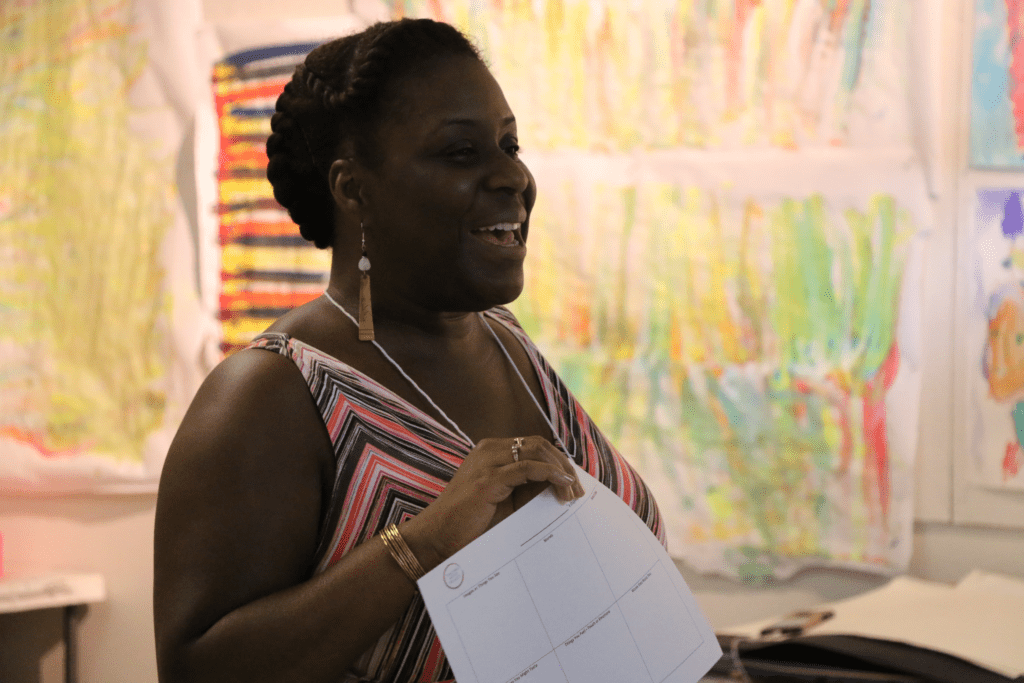
From there, the participants created community poems that turned into collaborative performance pieces, using these situations of social injustice as their inspiration. This way, they are not only creating art through various intelligences, but are directly engaging in issues current in their world.
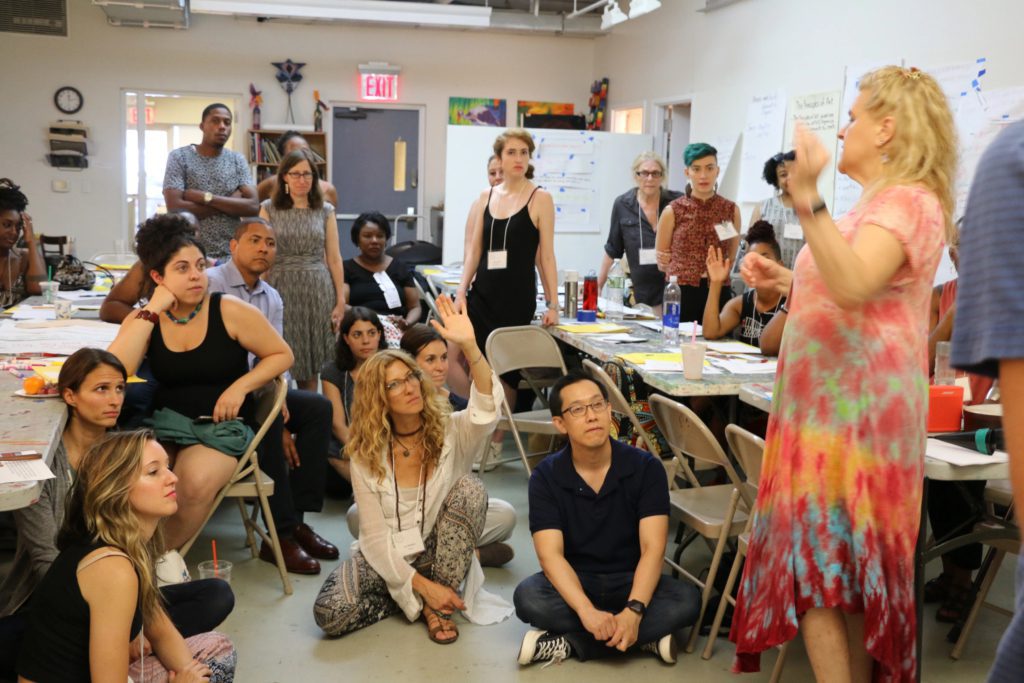
Awareness Raising
But what is the point of art and activism without a community to share it with? That is precisely what these participants sought to do. In groups, they took their collaborative performance pieces to the streets, flooding Frederick Douglass Boulevard and the Jackie Robinson Park with sidewalk chalk, drums, poetry, singing, dancing, and more.
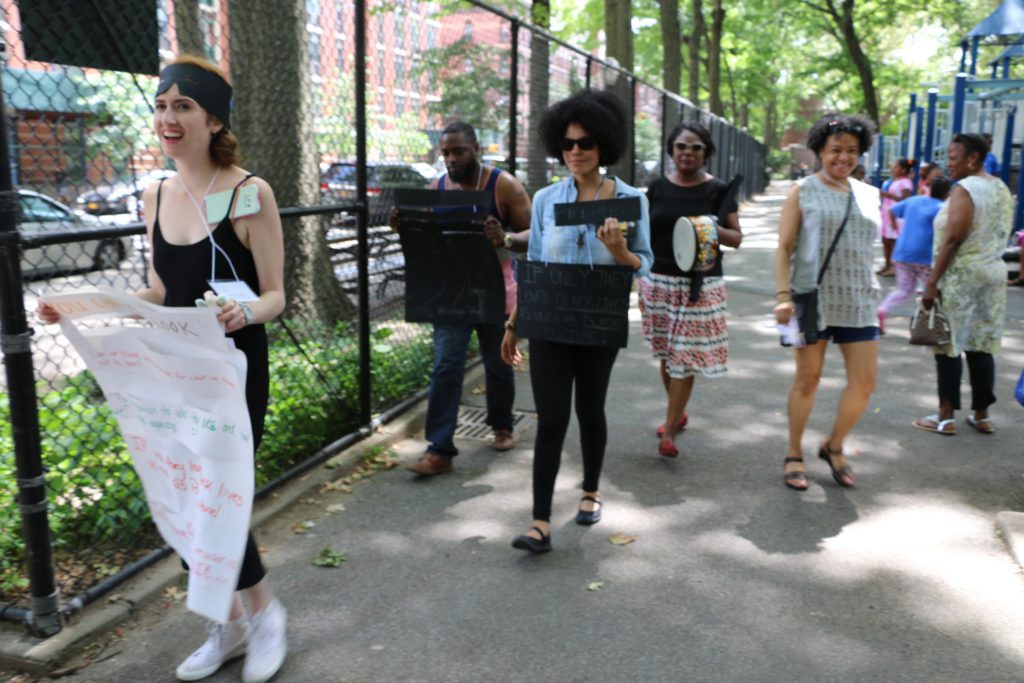
One group engaged with a group of school-aged children and, after performing for them, had an in-depth discussion with the fourth graders about bullying, injustice, and other issues they felt in their community.
Another group asked various people about the changes (good and bad) they’d witnessed around Harlem, recording their answers for future use in a mixed media project.

And other groups wrote poetry in sidewalk chalk about Black Lives Matter, or created musical performance pieces to get attention and start conversations, or yet still engaged in a dialogue with officers in the neighborhood about the skewed statistics of black people killed by the police.
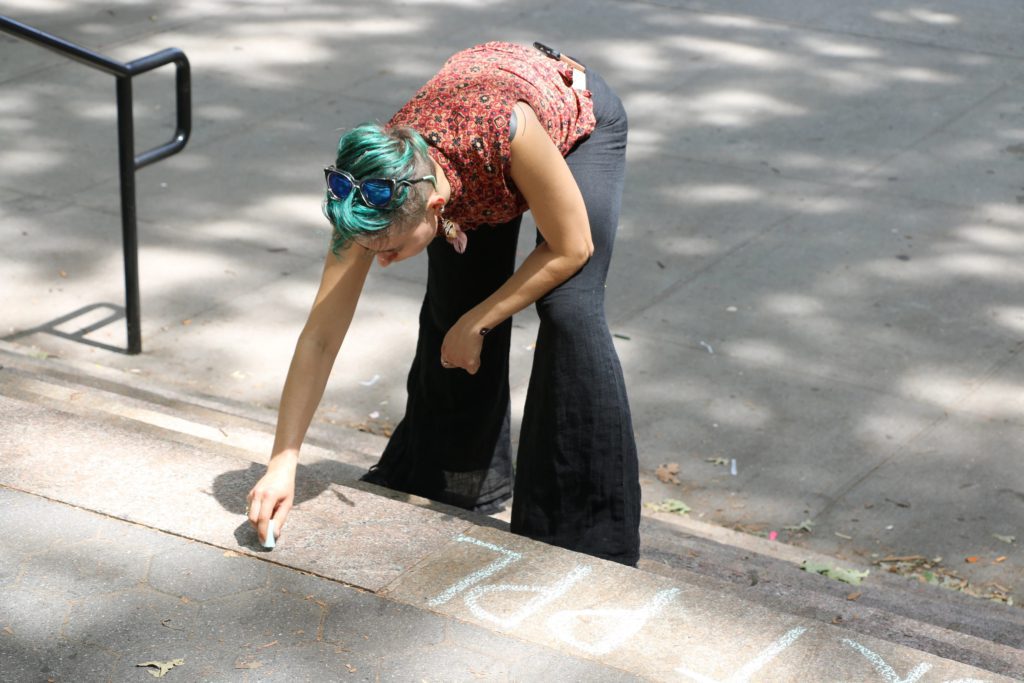
The participants took their projects out of isolation and into the community at large in order to raise awareness about these issues and engage with a broader audience. Art cannot be an insular thing, if it is going to make a difference. The time to use our voices and our creativity for change is now, and that is exactly what these twenty-nine artists did.
Social Action
It was a tremendous afternoon, leaving many participants feeling emotionally recharged and “spiritually renewed.” They came back together to reflect with the facilitators and discuss what comes next. They took some quiet time to document strong moments of the day that they wanted to recall, and moments they think they could adapt for their classrooms.
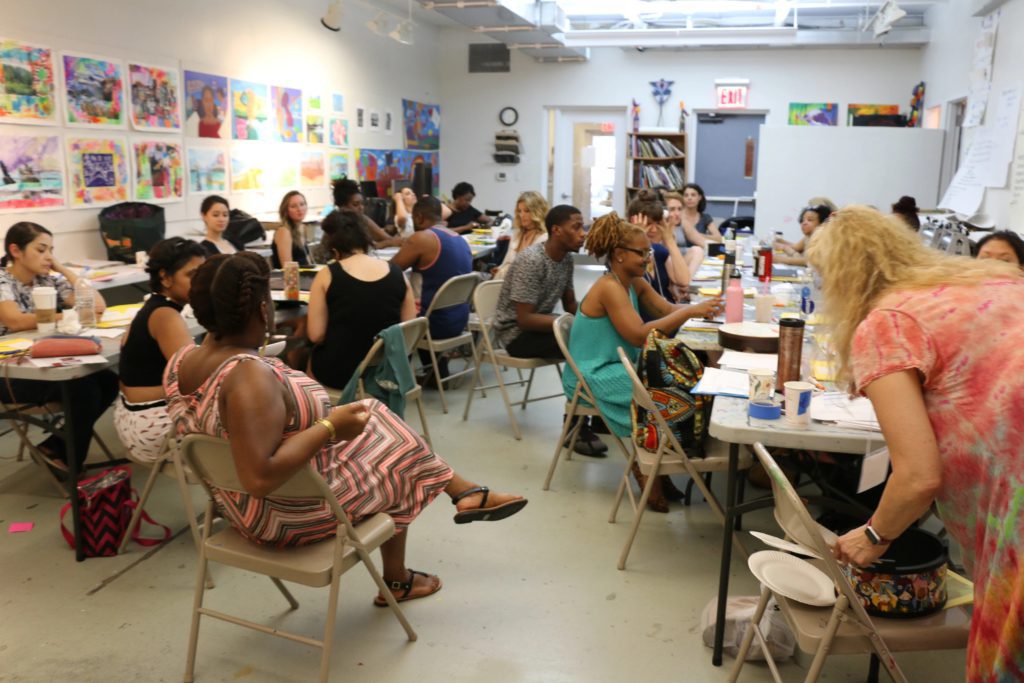
“I really enjoyed going out into the community and hearing the reflections from that experience. It’s something I’ve wanted to do in my classes. I’m hoping to use street performance, or hallway performance more in the future.” – Dale Novella Anderson, Musician
There were difficult discussions as well when the conversation opened up and the participants discussed how they perpetuate various injustices in their classrooms, like racism and sexism.
“The final discussion today was difficult, necessary, and eye opening. I appreciated recommendations of literature and organizations to look to in order to understand white privilege, my own privilege. This is an issue to be further explored. I also understand the need to self educate and appreciated this conversation and suggestions. The group was very generous and I learned a lot. Thank you.” – Jacqueline Raymond, Theatre Artist
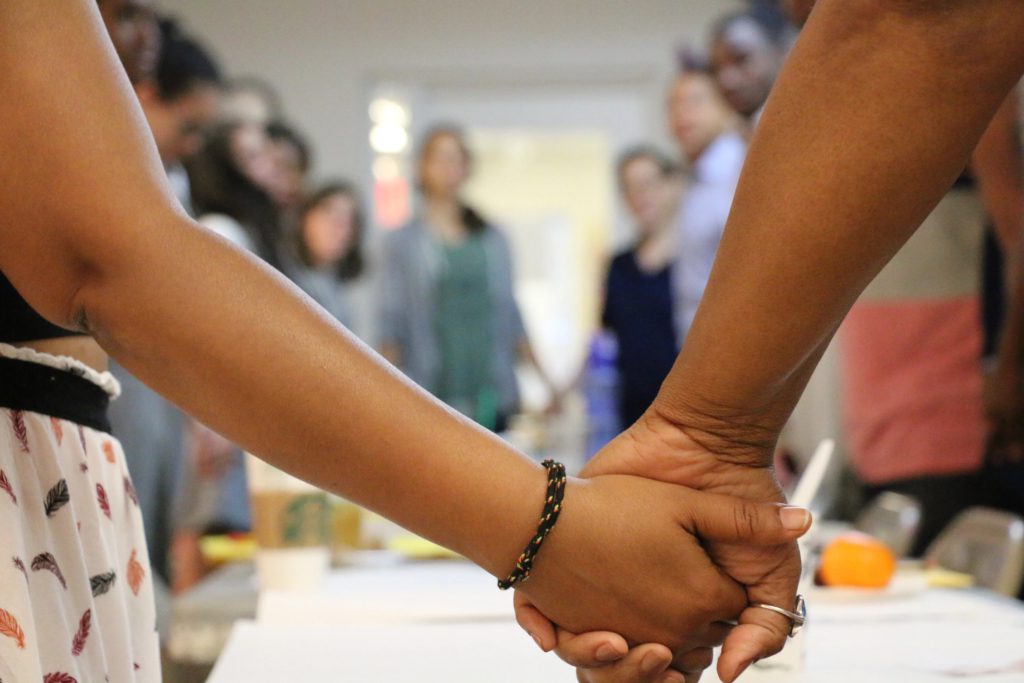
Yet, the group was very open and respectful, cultivating an equal environment where all voices are heard, creating space for awareness and change.
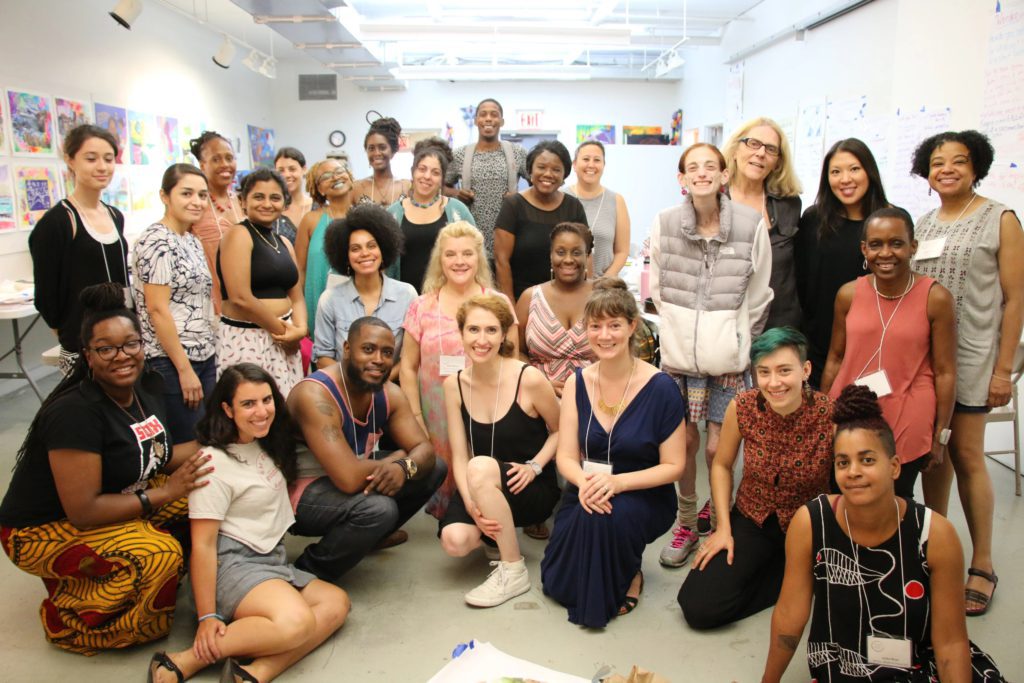
It was a successful and meaningful Summer Institute, and we very much want to thank each and every participant for contributing their time and talent to this community. Applications are now open for the 2017-18 Teaching Artist Project, and you too can be a part of this community of artists and activists.
